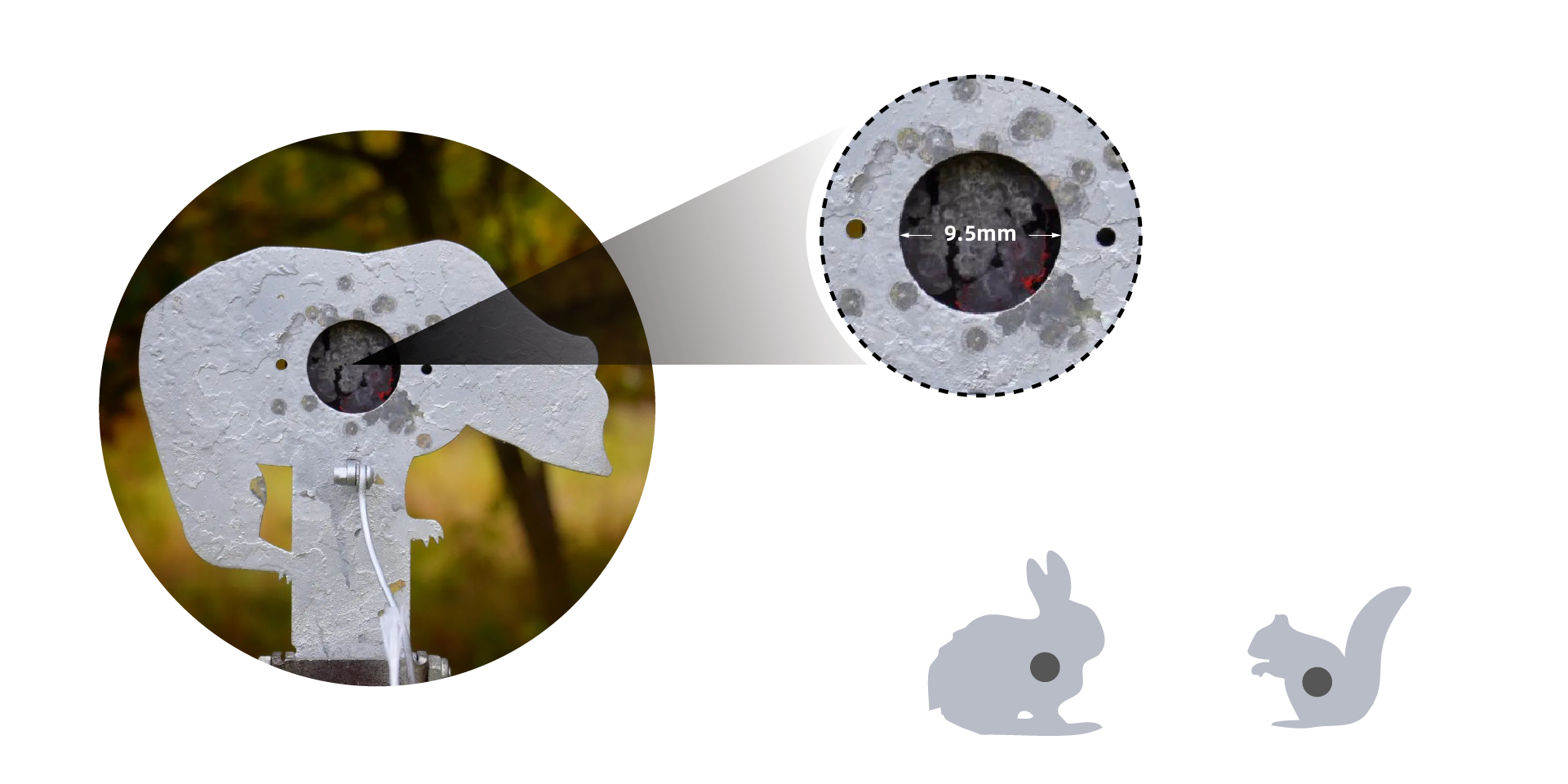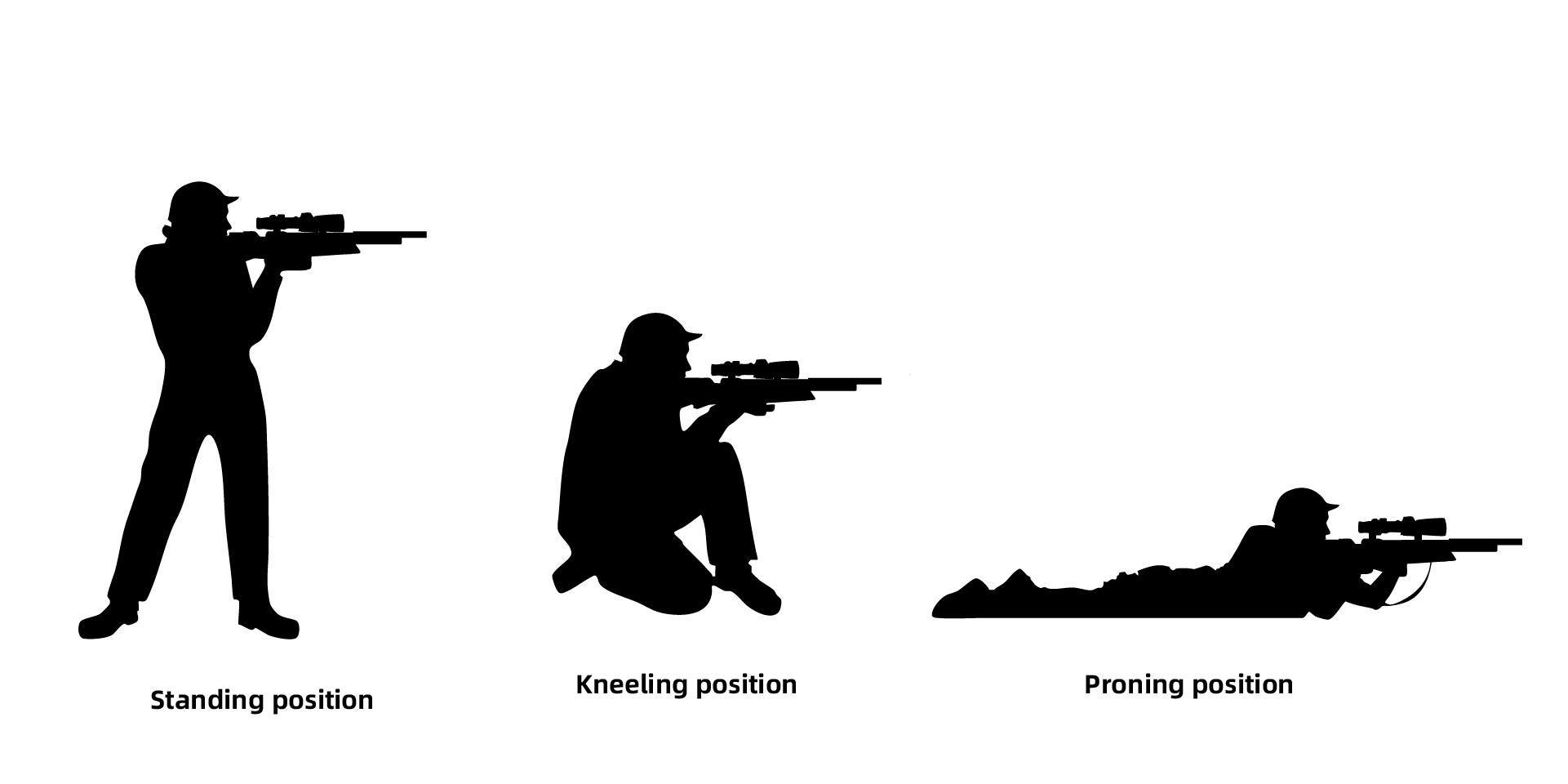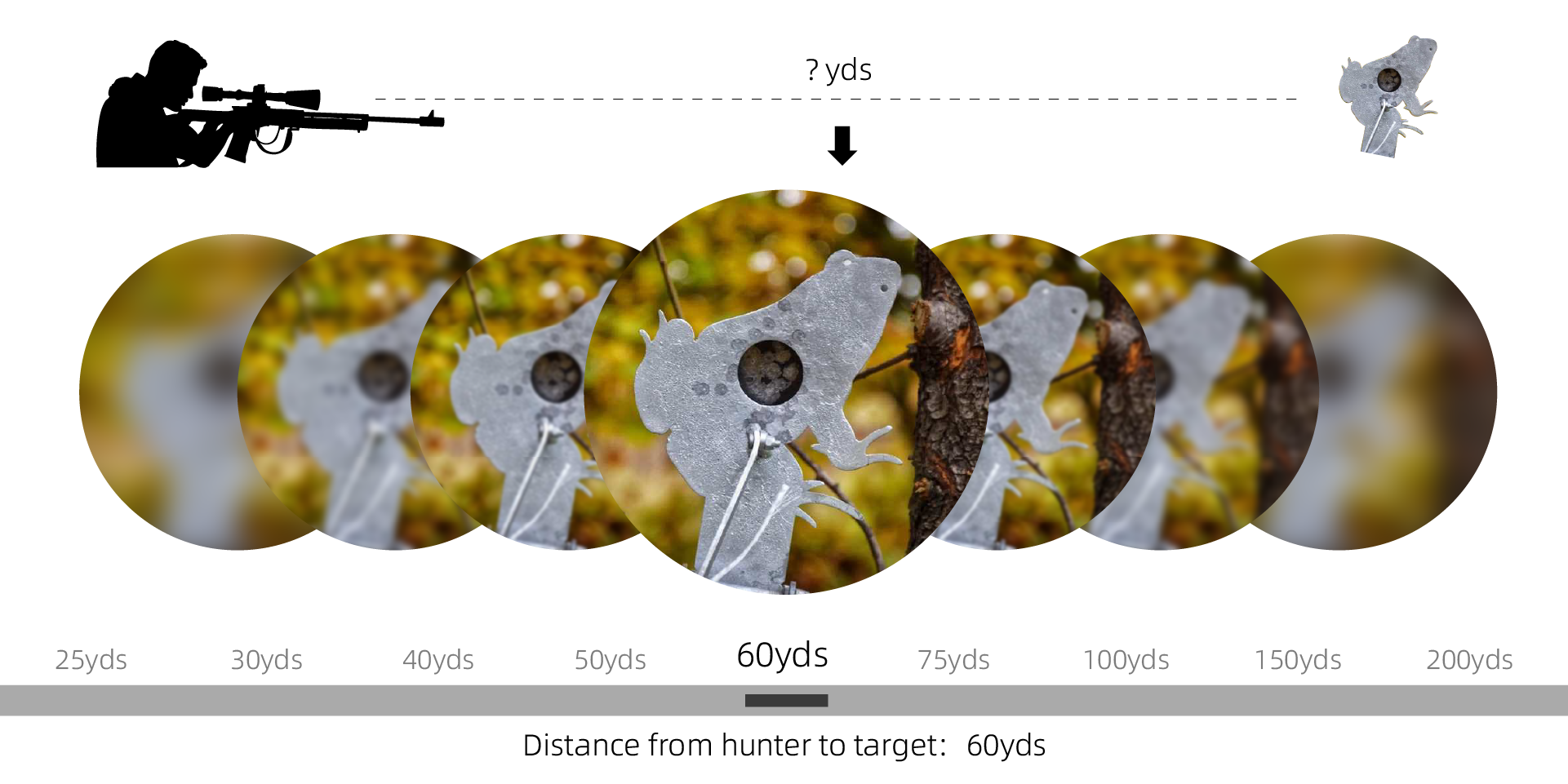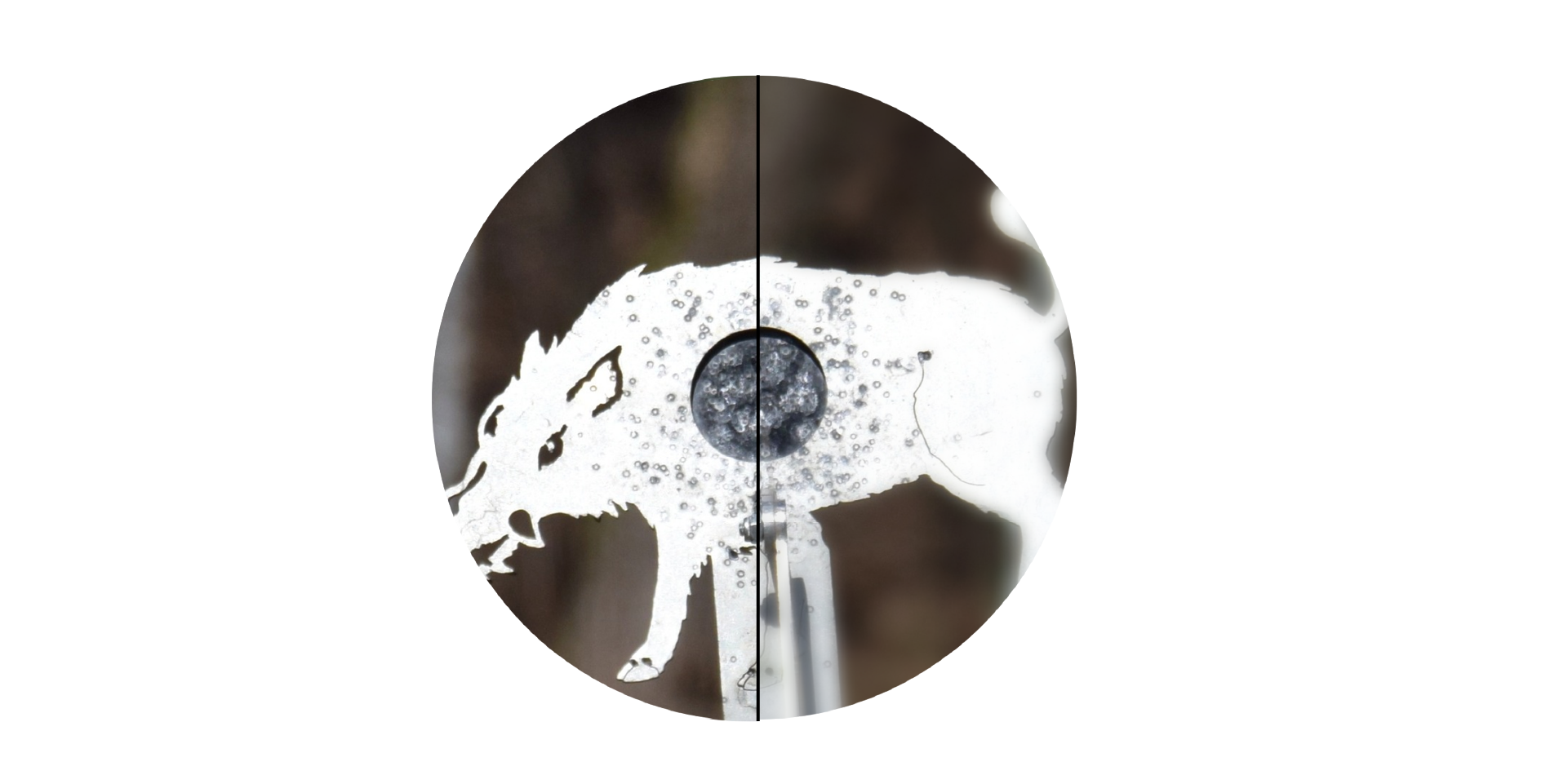Field Target (FT) shooting is a popular precision airgun competition that combines marksmanship, mental acuity, and outdoor skills. Originated in the UK in the 1980s, it has grown into an internationally recognized sport where competitors engage metal targets at varying distances with 10 to 55 yards. Unlike traditional target shooting, Field Target adds the elements of distance estimation, positional shooting, and wind reading – making it one of the most technically challenging airgun sports.
Course Layout and Shooting Distances
A typical Field Target course features:
Variable Ranges: Targets are placed at distances from 9 to 50 meters (10-55 yards), deliberately arranged to prevent pattern memorization
Lane Configuration: 30-50 targets are spread across a woodland or field course, with each "lane" presenting 1-2 targets
Natural Setup: Targets are positioned to utilize the natural terrain, often partially obscured by foliage or placed at uneven elevations
The exact distances are never marked, requiring competitors to develop exceptional range estimation skills.
Target Specifications
Target material: It is made of metal/ steel.
Shape Designs: Silhouettes include realistic animal shapes (rabbits, squirrels, birds) and geometric forms, like diamond, circle, etc.
Kill Zones:
The target has a hole in the face plate, that is called kill zone. You have to hit the kill zone to gain the score.
Diameter ranges from 9.5mm (3/8") for extreme ranges to 50mm (2") for closer targets
Must be struck cleanly to knock down the target. Sometimes competitors think they hit the zone, while the target fail to fall down (That can be argued).
Scoring is binary - 1 point for a knockdown, 0 for any other result

The Three Pillars of Field Target Shooting
Distance Estimation
No rangefinders allowed - competitors use scope reticles or visual estimation
Experienced shooters can estimate within ±0.5m at 40m distances
Ballistic Compensation
Shooters must adjust scopes for both elevation and windage
Positional Mastery
While any position is allowed, courses often require specific stances:
Prone: For maximum stability at long range
Kneeling: Requires specialized shooting sticks
Standing: The ultimate test of balance and control
Sitting: Seats can be used but must not exceed 6 inches in height
You may use a shooting mat, which provides comfort and stability during extended shooting sessions.

Equipments
Air Rifles:
PCP(Pre-charged pneumatics) accounts for 95% of competition guns due to
Near-zero recoil (critical for precision)
Consistent power output (typically 12-20 ft/lbs)
Multi-shot capabilities
Spring Gun Class: A dedicated division for traditional spring/piston guns
Competition Timer
Typically, the set-up time per lane is one minute, and the time allowed per shot is also one minute. That means if 5 shots on a lane, the total time allowed is 6 minutes.
Clock starts when shooter begins ranging.
Competition challenges
You will need to estimate the target distance to adjust the turrets to take a precise shot.
No rangefinders allowed – Competitors must estimate ranges using only their scope reticles or visual cues.
Deceptive terrain – Targets placed on slopes, among trees, or in dappled light can deceive your perception.
Pressure of time – With just one minute per shot, misjudging the distance by even a meter can result in a miss.
How to Pick the Rifle Scope You Need
Considering the competition rule, there are some features you need to know:
High magnification range would be recommended for precise aiming at small targets at varying distances. 10-50x, 12-50x. High magnification helps the shooter estimate the distance with the help of parallax.
Side focus is a must to correct parallax from close distance to long distance, maintain a crisp and clear image at different magnification. It should be settable from 7m onwards. Though AO (Adjustable Objective) also works, side focus is preferred during FT (Field Target). Learn more about the difference and benefits of AO and SF, check our blog post.

Tactical turret/ exposed turret allows you quickly adjust the elevation and windage adjustment between targets and among different distances.
Fine tuning is crucial for hitting small kill zones. Click values of 1/8 MOA and 1/10 MIL, relatively small click value, are highly recommended to hit the small kill zones.
A sidewheel is preferred for two reasons, one is to set the parallax more precisely and the other is to have a surface for marked tape to write the distance down on the parallax of the riflescope. You will need pre-test and familiarize the distance and adjustment before the competition. The competitors will write down the distance marks to quickly know the distance to the target.
High or medium rings/mounts are recommended for large objective lens dia and comfortable heading position, which is significant for Field Target Competition.
A bubble level ensures the scope is level/parallel, which helps provide accurate distance readings.
Second Focal Plane
Usually you wouldn't change the magnification during the competition. SFP is preferred. You will need to use the parallax to adjust the scope under the same magnification. Another thing is that if you want to use high magnification, the reticle wouldn't be enlarged to block your field of view. The reticle remains the same throughout the magnification.
Simple Reticle
Simple reticle is recommended, like G4 or mil dot reticle. Since you wouldn't use the reticle too much. You will use the parallax to estimate the distance. G4 is simple for fast target acquisition. Mil dot reticle with thin line wouldn't block the view.
A mil dot reticle will help you estimate the distance if you know the size of the object. You would need to mark down how many mils the target spans in the reticle to estimate the distance.
You will need to use 40x magnification, to estimate the ranges.
Decent Glass with Crisp and Sharp Image is Necessary
A decent glass is recommended, since you need to use high magnification to aim the target. With the high magnification, the image quality would become poor. The color reproduction would be worse than that at low magnification. If you want to learn more about Vector Optics' lens, check the blog post here.
High-quality glass helps improve rangefinding because accurate parallax adjustment relies on a clear, sharp image.

Scope Recommendation
For field target, SCOL-TE52, Continental x8 6-48x56 ED MIL, is highly recommended.
●8x zoom continental possesses the most high-end glass, with 93% light transmission, presenting crystal-clear image
●56mm objective lens further improves the image quality
●1/8 MOA click value for precise adjustment
●VCO-6MOA reticle helps you do rangefinding
●0.1MOA center dot for field target bulleye at various distance
●High magnification for better rangefinding
●Illumination for different light condition
●Side focus starts from 10yds to infinity
SCOL-TM52, Continental x8 6-48x56 ED MIL Tactical Rifle Scope, similar scope with different units
●8x zoom continental possesses the most high-end glass, with 93% light transmission, presenting crystal-clear image
●56mm objective lens further improves the image quality
●0.05 MIL click value for precise adjustment
●VCO-5MIL reticle helps you do rangefinding
●0.03 MIL center dot for field target bulleye at various distance
●High magnification for better rangefinding
●Illumination for different light condition
●Side focus starts from 10yds to infinity
SCOL-34, Sentinel-X 10-40x50
●40x high power for better ranging
●50mm objective lens dia improve image brightness
●1/8MOA click value for precise adjustment
●1.5mm center dot for field target bulleye at various ranges
●COM-25M reticle helps you do rangefinding
●Side focus from 10m to infinity
SCOL-58, Sentinel-X Pro 10-40x50
●40x high power for better ranging
●50mm objective lens dia improve image brightness
●1/8MOA click value for precise adjustment
●1.5mm center dot for field target bulleye at various ranges
●COM-25M reticle helps you do rangefinding
●Side focus from 10m to infinity
Minotaur possesses extreme high magnification.
SCOL-36, Minotaur GenII 10-50x60 DOT
●40X high power fo better ranging
●60mm objective lens dia for improve image brightness
●1/8 MOA click value for precise adjustment
●Side focus from 10yds to infinity
●VETD-LR simple reticle for aiming at high power
●0.125MOA center dot for aiming close range bulleye
SCOL-39, Minotaur GenII 10-50X60
●40X high power fo better ranging
●60mm objective lens dia for improve image brightness
●1/8 MOA click value for precise adjustment
●Side focus from 10yds to infinity
●VEMP-LR reticle assists ranging
●0.15MOA center dot for aiming close range bulleye
SCOL-37, Minotaur 12-60x60 GENII SFP
●40X high power fo better ranging
●60mm objective lens dia for improve image brightness
●1/8 MOA click value for precise adjustment
●Side focus from 10yds to infinity
●VETD-LR reticle assists ranging
●0.125MOA center dot for aiming close range bulleye
SCOL-40, Minotaur 12-60x60 GENII MFL
●40X high power fo better ranging
●60mm objective lens dia for improve image brightness
●1/8 MOA click value for precise adjustment
●Side focus from 10yds to infinity
●VEMP-LR reticle assists ranging
●0.125MOA center dot for aiming close range bulleye
Send Your Inquiry Today
